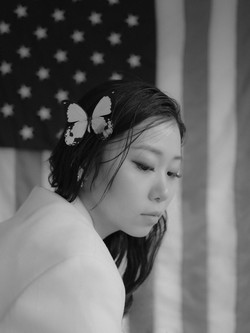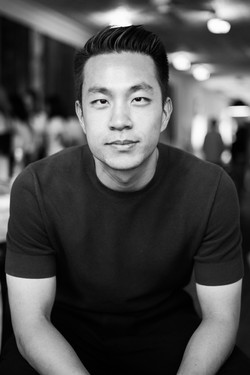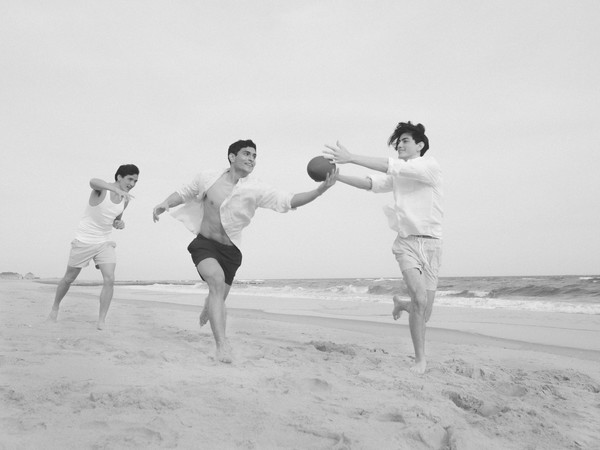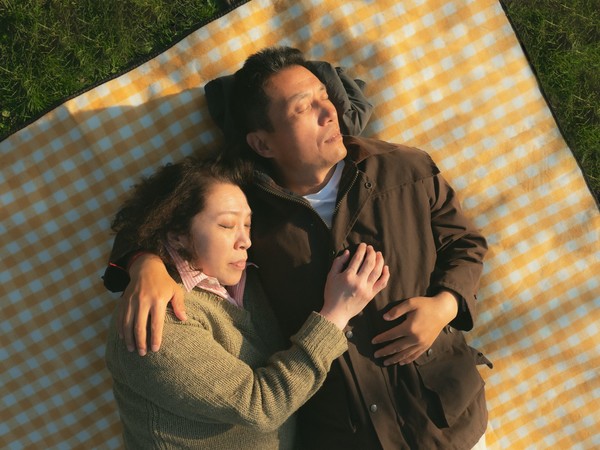Bringing out the Asian in the American

ANDREW KUNG is a Brooklyn-based photographer whose artistic goal is to expand and diversify the Asian American identity. Kung examines the Asian American narrative with a tender gaze, exploring deep into each story that a face can tell. The Yonsei Annals spoke with the photographer about how he pays tribute to the complex beauty of being Asian American through photography.
Annals: Tell us about your background and how you came to pursue photography.
Andrew Kung: I grew up in the San Francisco Bay Area in California, a predominantly Asian American city, and went to college at UC Berkeley. During my senior year of college, I started taking landscape images of my city with an iPhone—this is when I fell in love with photography. It was not until I met a friend, who is a commercial model, that I started taking portraits. He introduced me to many other photographers, which helped me realize that I could make a living through photography. Coming from a business background, I was fixated on the idea that I had to work in either banking, accounting, or finance, but this experience gave me a new perspective. I then moved to New York where I built a community of clients and a professional network.

Annals: What is your overall goal as a photographer, and how has that influenced your photos?
Kung: My artistic statement or vision is to explore themes of Asian American identity, visibility, and belonging. There is very little representation of the Asian American narrative, especially in the realm of photography, leaving out many areas that need our attention. I think we are still far from the point where we can explore more nuanced stories like the de-sexualization of Asian American men or how Asian Americans are considered “the perpetual foreigner.” My mission as a photographer is to elevate these themes and stories in my photographic medium. Of course, there is the aspect of visual beauty that motivates me to create images, like how the composition and the lighting are put together in a photograph. But I want to take that photograph to the next level by giving it intentionality and symbolism that would make people think about it a little longer.
Annals: Where do you think the element of Asian beauty is found, and what processes do you go through to bring it out?
Kung: The type of beauty in Asian American culture that I seek to bring out is the celebration of diversity. There are so many different types of Asian Americans in the United States in terms of ethnicity, gender, sexuality, and body type. Therefore, getting to know a diverse group of models is a big part of the process. For me, the important part is to acknowledge the idea that Asian Americans are not monolithic. We do not look like one person, and we do not act like one person.

Annals: How is Asian beauty different from Westernized beauty standards?
Kung: I feel like Western beauty standards, in general, are centered on specific features of the body. For men, it is the traditionally masculine, chiseled jawlines and physically built look that contains a certain type of energy or persona. This is quite different from traditional Eastern beauty standards, where softer appearances are considered beautiful and masculine. However, in the United States, such features are de-sexualized and are seen as “weak.” I think in Asia there is a celebration of a greater, more inclusive spectrum of masculinity which the United States should recognize.
Annals: What is the most memorable photo you have taken?
Kung: There is a photo that I took of my parents with them lying down, and my dad embracing my mom. That image is part of the Perpetual Foreigner series. It was a special moment for me because the project was about celebrating a sense of belonging in a country that does not see Asian Americans as “truly American.” That picture showcased my parents as the ideal American Dream story of coming to this country without having much but nevertheless building a better life for themselves.

Annals: What is your opinion on the specific narrative Asian features entail in American society? Do you consider it as part of the cultural identity?
Kung: The perception of Asian Americans is centered on the model minority myth, which is the idea that all Asians are well off and do not face any hurdles in their steadfast road to success. However, in New York, Asian Americans have the highest poverty rate, which means that society discounts the hardships that specific ethnic groups face. These are the nuanced experiences that need to be understood by the majority, not just the narrative of physical appearances like the shapes of the eyes or the color of the skin. I think that the mutual understanding of what it means to be Asian American, such as the experience of being seen as simply an “Asian person” in the United States, is what unites us.
I also witnessed a lot of my peers’ different journeys of reclaiming their Asian identity. They have this “ah-ha moment” in which they realize they have grown into an “American” through exposure to media that does not necessarily feature any Asian American artists. Then they proceed to want to know more about their Asian identity, their culture, and history. Subsequently, they read more Asian American literature and watch more Asian American films. Being Asian American means that there is always a mix of both cultures, which makes up a rich and diverse experience as an Asian American.
Annals: Is your “ah-ha moment” somehow related to your work?
Kung: I would say that my “ah-ha moment” started when I was photographing a small population of Chinese Americans in Delta, Mississippi, a city that is historically very white and black in terms of ethnicity. I had such an eye-opening experience there because I grew up and lived in a culturally diverse place. When I went to Mississippi, there was not a single Asian person in sight. So I felt like all eyes were on me. That experience was significant because I realized that Asian Americans have vastly different experiences depending on where they live. That sparked my curiosity about all the different Asian American experiences, and I started reading more about Asian Americans and watching more films. My “ah-ha moment” was when I decided I wanted to explore more of my identity in my work. Having found a mission I am passionate about, I feel like I am no longer taking photos just for he sake of creating beautiful images.
Annals: Tell us more about the inspiration behind the Perpetual Foreigner project.
Kung: A major source of inspiration for this project was to figure out ways to create an intimate, tender gaze on everyday American life. I also wanted to show that Asian Americans belong in these quintessentially “American” spaces and that we are just as American as anyone else. There is nothing special about the space itself; it is a park, a lake, and are places that I have often spent time in, but for some reason never associated with the Asian American experience. The overall message is that we are able to inhabit this space and that it should be “normal.” If it somehow comes across as weird to see an Asian person in these environments, this photo series challenges that discomfort. There is an image where I put my friend on a horse and made him look like an American cowboy, which goes against the staple image of Western cowboy culture. While some images have that strong statement, for others I wanted to promote a cohesive sense of belonging.

Annals: Is there anything you would like to say to Yonsei students aspiring to be a photographer?
Kung: I would say to think about photography as a body or a collection of work. I think visual storytelling is most powerful when the images are in context. It becomes easier to photograph with meaning when you have a project thesis. I encourage younger photographers to think about transforming the image into a larger series with a collective theme rather than just focusing on creating a nice image. I also would like to remind them that it takes time to refine their visual language and storytelling capabilities and that it is okay not to feel so confident right off the bat.

